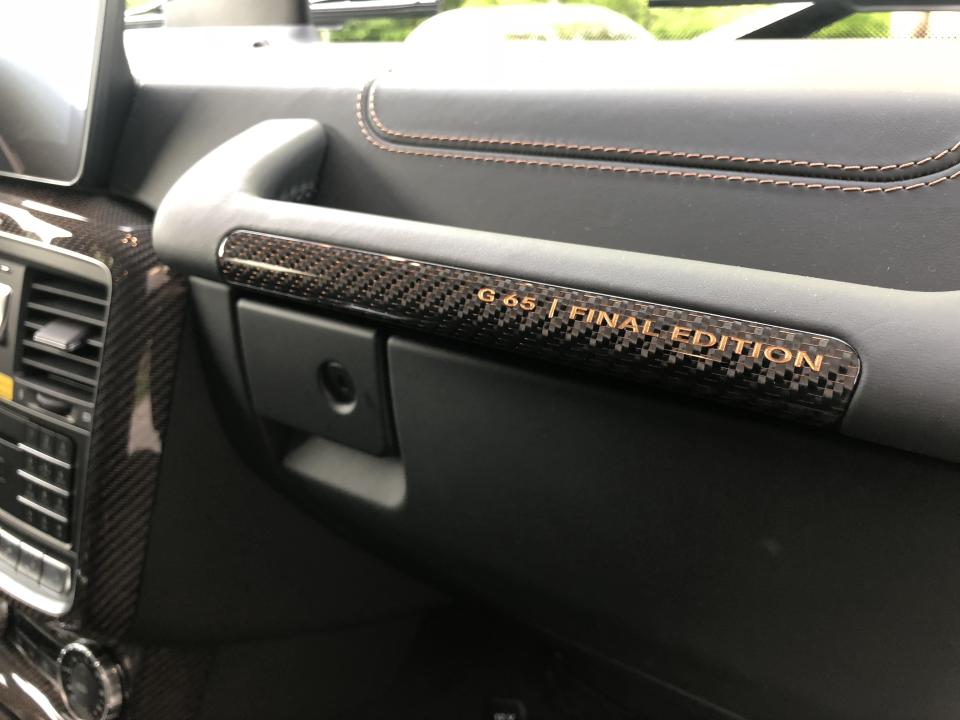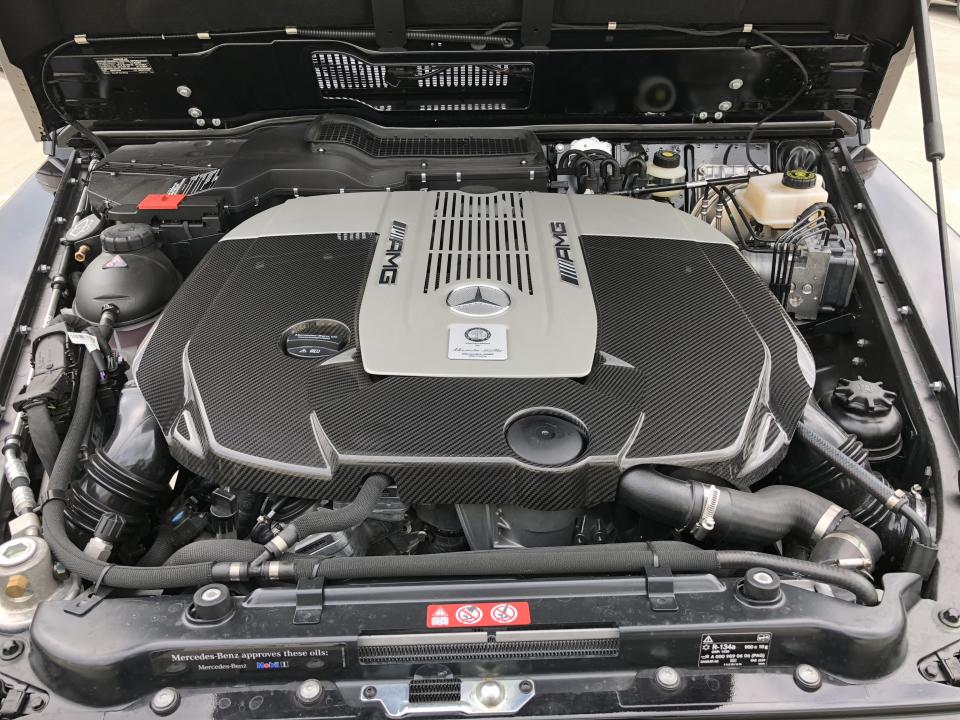Mercedes-AMG G 65 Final Edition: Love it or hate it, the G-Wagon makes a statement
Let me begin by saying this. I have no idea why Mercedes Benz (DAI.DE) continues to build the G-wagon. It’s boxy, drives like a tank, feels cramped, and is about as refined as an armadillo at the Westminster dog show. But after a few days with it, I could see why this car is dearly loved by its fans — and panned by its critics.

First, some history. Originally created by Mercedes as a military-oriented, go-anywhere SUV in the 70s, the body-on-frame G-class was offered for civilian use starting in 1979. And from then on, its popularity and fandom grew.
The 2018 version we have today is still based on that 1979 model, with, of course, incremental updates along the way. It still houses one of its most important features, and arguably one 99.9% of owners haven’t touched – those three fully-locking differentials operated by switches on the center dash console. You can take the G-wagon way off the pavement, if you actually desired.

Mercedes didn’t just offer us a plain, vanilla G-class SUV to test off the lot. We received the top-of-the-line 2018 AMG G 65 Final Edition, a designation meaning this was the last of its kind (that is until the new G-class comes out in late 2018).
Our test version, with a number of cosmetic bells and whistles signifying its special status costs … wait for it … $251,695. To be fair, you can get a plain vanilla G 550 for $123,600, but only 30 G 65 Final Editions will make their way to the states.

The engine
The heart of this German armadillo is not the the base 4.0L biturbo V8 or the stepped-up AMG 5.5L V8 biturbo. The G 65 gets AMG’s 6.0L V12 biturbo, ringing out a massive 621 hp and 723 lb-ft of torque (at 2,300 rpm). This is serious high-performance output (and around $80k more than the AMG V8-powered G 63).

Coming to grips with the G-wagon
The G 65 Final Edition was striking when it arrived in its obsidian black paint, with matte bronze accents throughout the exterior, including the 21-inch AMG wheels. It looked the business.
Now, entering the G-wagon will take you back a long way to cars of yore. As you click the button underneath the wide handle to open the door, the button releases with a mechanical click and the Jeep-like door swings open like an icebox from the 1950s.

Step up inside and you are entering what seems like a cramped, 4-sided box. It is a nicely appointed box, however, as the cabin interior was given full designo treatment, which includes lovely black nappa leather seats with contrasting brown thread cross-stitching, and black carbon fiber trim liberally placed through the console.
In the smallish driver’s seat, I feel a little cramped and try to adjust the seat backward. It only gives a few inches, and that’s about it. The beefy steering wheel is essentially now sitting in my lap, with some minor adjustments available for it. The story here is the G 65 makes you adapt to it, not the other way around.

The center stack was stock Mercedes from the mid-aughts, save for those three large differential switches, warning the driver and occupants with bright yellow stickers not to engage them unless you know what your were doing.
Twisting the key in the ignition (no push-button start here) unleashes a long, high-pitched, electro-cranking sound akin to 1.21 gigawatts of power shooting through the engine block, roaring the motor back to life, with exhaust firing out from the sides of the underbody. Once again you’re reminded that there’s something about a V-12 when it starts up – there really isn’t anything like it.
Now shifting into drive and pulling into traffic, with that much power on hand the G 65 has no problem scooting around town or on the interstate. There’s plenty of torque available at low RPM and the biturbo engine gets its off the line briskly. But given the firepower under the hood I expected it to be a bit quicker. Unfortunately that’s what happens when the vehicle you’re in weighs nearly 5,700 lbs.

Driving around town was interesting to say the least. The G 65 seems planted, until the rear wheels break loose every now and then giving the driver a strange unsettled feeling. Steering was heavy and not really all that precise. And pray you’re not maneuvering the G-wagon in a tight parking lot. The wheel takes an inordinate amount of force to turn.

But, when you drive this tank more, you discover there’s nothing really like it on the road today. You start enjoying the quirks and truck-like ride. You start opening and closing the door every now and then because you love that mechanical sound of metal meeting spring-cushioned metal. The windshield sits nearly straight up, with no curvature there, like on a Willy’s Jeep. The V12 devours the road like a ravenous beast, bellowing out exhaust from its side-mounted pipes. The rear door swings open like the door to your house, no hatch here. And everyone stares when the jet-black G-wagon pulls up anywhere.

It’s almost a tale of two cars, or wagons if you will. The G 65 feels like it’s the SUV of the future — by way of the 1960s. And the strange part is that’s not a knock. It’s old-school with some modern improvements, and that’s why it has so many fans, even with the steep price. And who knows, maybe the ultra-exclusive Final Edition will be a classic in a few years, when car enthusiasts of the future won’t question its reason for being, but instead marvel at its staying power.





—
Pras Subramanian is a reporter for Yahoo Finance. You can follow him on Twitter and on Instagram.
Related stories:
Lamborghini’s Urus SUV will also be its first hybrid
